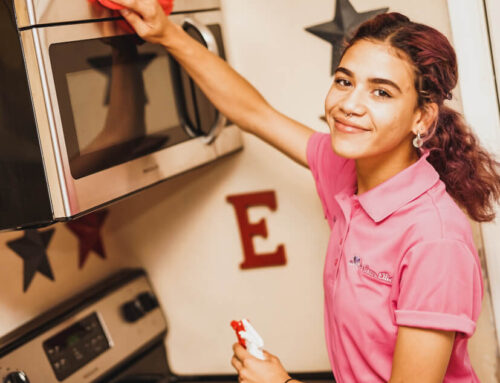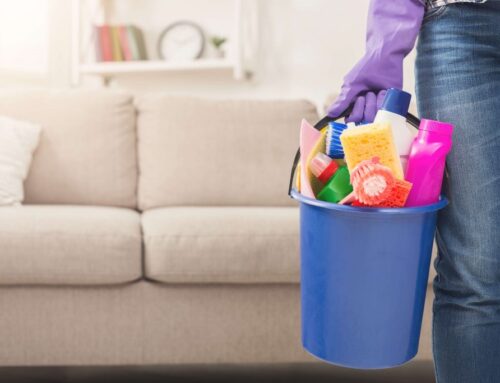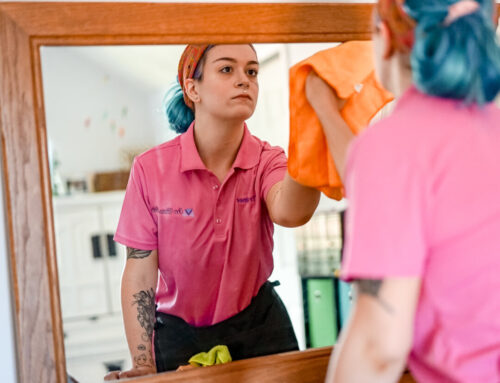In an era where environmental consciousness is at the forefront of consumer choices, the impact of our everyday decisions becomes paramount. A seemingly innocuous choice such as selecting cleaning products can have far-reaching implications for the planet. For eco-conscious consumers and sustainability advocates, understanding the environmental consequences of cleaning products and making informed choices is a crucial step towards creating a greener home. In this comprehensive guide, we’ll delve into the various aspects of cleaning products, their impact on the environment, and provide actionable insights for making responsible choices.
Choosing Wisely
The choices we make as consumers have a ripple effect on the environment. The Environmental Impact of Cleaning Products: Choosing Wisely is not just a tagline; it’s a call to action for those who strive to create a more sustainable future.
The Carbon Footprint of Cleaning Products
Cleaning Products: Environmental Culprits
Cleaning products are essential for maintaining a hygienic and pleasant living environment. However, these seemingly innocuous items carry a hidden environmental burden—their carbon footprint. This term refers to the total amount of greenhouse gas emissions, primarily carbon dioxide, produced directly and indirectly as a result of a product’s lifecycle.
The Journey of Emissions
The carbon footprint associated with cleaning products begins long before they find a place on store shelves. The production phase involves a multitude of processes, from extracting raw materials to manufacturing and packaging. Each step contributes to the release of carbon dioxide and other greenhouse gases into the atmosphere.
Transportation further amplifies this footprint. Whether by land, sea, or air, the movement of cleaning products from factories to distribution centers and eventually to consumers requires energy, predominantly sourced from fossil fuels. This energy consumption translates to more emissions, adding to the overall environmental impact.
A Cycle of Impact: Usage and Disposal
Once in our homes, these cleaning products continue to exert their influence on the planet. The act of using these products, such as spraying aerosols or applying detergents, releases chemicals into the air, contributing to indoor air pollution. Additionally, many cleaning products necessitate the use of hot water, thereby increasing energy consumption and emissions associated with water heating.
The story doesn’t end there. When cleaning products are discarded, they often end up in landfills, where they can release harmful gases as they break down. Moreover, some cleaning agents find their way into water systems, contaminating aquatic ecosystems and further magnifying the environmental consequences.
A Green Alternative: Making Informed Choices
In a world grappling with climate change and its ramifications, choosing cleaning products wisely is a step towards sustainable living. Eco-conscious consumers and sustainability advocates hold the power to drive change through their purchasing decisions.
One effective approach is to seek out products that have a lower carbon footprint. Look for those manufactured using renewable energy sources such as solar or wind power. Certifications like the Carbon Trust Standard or the EPA’s Safer Choice label can guide you towards products that meet stringent environmental criteria.
Furthermore, choosing products with minimized packaging and opting for concentrated formulas can help reduce the carbon emissions associated with transportation and production. By embracing a minimalistic approach, you not only lessen your carbon footprint but also contribute to the reduction of plastic waste.
Embrace the Future: A Cleaner Tomorrow
A Pivotal Shift Towards Sustainability
The path to a cleaner and more sustainable tomorrow begins with acknowledging the interconnectedness of our choices and the environment. In the realm of cleaning products, this awareness becomes particularly significant. It’s no longer just about a sparkling home; it’s about a cleaner, healthier world for us and generations to come.
Empowerment Through Knowledge
Understanding the carbon footprint of cleaning products empowers us to be conscious consumers. It’s about lifting the veil on the often-hidden environmental costs that accompany our daily routines. As we delve into the lifecycle of these products, from their inception to their eventual disposal, we gain a holistic perspective of their impact.
Armed with this knowledge, we can make informed choices that resonate with our commitment to preserving the planet. The significance of our individual actions becomes amplified when we comprehend the bigger picture—how our decisions, no matter how seemingly small, contribute to a collective environmental footprint.
A Call to Action: Championing Change
The journey towards a cleaner future requires champions—individuals who refuse to settle for the status quo and instead advocate for responsible consumption. By choosing cleaning products that prioritize renewable energy sources, lower emissions, and sustainable packaging, we become catalysts for change.
Products manufactured using renewable energy sources not only reduce carbon emissions but also contribute to the growth of a greener energy sector. Similarly, opting for items with reduced emissions throughout their lifecycle supports the transition to more environmentally friendly production processes.
Eco-friendly packaging, such as refillable containers and biodegradable materials, presents a tangible way to address the plastic crisis. Each refill avoids the need for a new plastic bottle, minimizing waste and promoting circular consumption patterns.
Our Legacy, Our Responsibility
As we stand at the crossroads of progress, the choice to embrace eco-friendly cleaning practices is not just a fleeting trend; it’s a responsibility we owe to ourselves, future generations, and the Earth. The cumulative impact of our collective actions can steer the course of our planet’s trajectory.
The vision of a cleaner tomorrow isn’t an abstract dream—it’s a future that relies on the choices we make today. By advocating for sustainable cleaning practices, we contribute to a more harmonious coexistence with the environment. Our homes become cleaner, healthier, and more aligned with the principles of sustainability.
A Brighter Horizon
In our pursuit of a cleaner future, the journey is just as important as the destination. As we shift our preferences towards products that reflect our commitment to the environment, we become pioneers of change. Through this transition, we carve a path towards a future where our homes shine not only with cleanliness but also with the brilliance of responsible, conscientious living.
Together, let’s champion the cause of cleaner, greener living—one that not only enriches our lives but also safeguards the planet we cherish. Through collective action, a cleaner tomorrow is not just a possibility—it’s a promise we make to ourselves and to the generations that follow.
Harmful Chemicals in Cleaning Products
The Pursuit of Cleanliness: A Hidden Trade-off
In the pursuit of a spotless and inviting home, we often wield an array of cleaning products, each promising a gleaming outcome. However, beneath the surface of this pristine exterior lies a potential trade-off—exposure to harmful chemicals. As we diligently scrub and sanitize, certain cleaning agents can inadvertently introduce hazardous compounds into our living spaces.
The Culprit: Volatile Organic Compounds (VOCs)
Enter volatile organic compounds, commonly known as VOCs. These compounds are emitted as gases from certain cleaning products and can linger in the air long after cleaning routines have concluded. VOCs encompass a variety of chemicals that can lead to a range of health concerns, from short-term irritation of the eyes and throat to more severe, long-term effects on respiratory and central nervous systems.
Indoor air quality is particularly susceptible to the effects of VOCs. When these compounds are released indoors, they contribute to what is known as indoor air pollution. This hidden hazard can be especially concerning, as we spend a significant portion of our lives within the confines of our homes.
The Quest for Safer Choices
Given the potential risks associated with VOCs, making informed choices about cleaning products becomes essential. This is where eco-friendly certifications play a crucial role. By opting for products that bear reputable eco-labels, we can ensure that our cleaning choices align with both personal well-being and environmental health.
Certifications like the EPA’s Safer Choice label and certifications from organizations like Green Seal and EcoLogo signal a commitment to reducing the presence of harmful chemicals. These labels indicate that products have undergone rigorous testing to ensure that they minimize the use of hazardous substances, including VOCs.
A Greener Path: Navigating the Aisle
While the cleaning product aisle may appear overwhelming, armed with knowledge about harmful chemicals, VOCs, and eco-certifications, we can confidently navigate our choices. As consumers, we have the power to support brands that prioritize health and sustainability.
As we place products in our shopping carts, let’s also place our trust in the credibility of eco-friendly certifications. By doing so, we actively contribute to a cleaner, safer home environment while simultaneously supporting the demand for products that adhere to higher standards of health and environmental responsibility.
In the quest for a spotless home, let’s not compromise on the well-being of ourselves and the environment. Together, we can usher in a future where our cleaning routines are not only effective but also aligned with the principles of health, sustainability, and conscious living.
Plastic Packaging Predicament
The plastic crisis is undeniable, and cleaning products are often packaged in single-use plastic containers. These containers end up in landfills or contribute to ocean pollution. Seek out brands that prioritize sustainable packaging, like refillable containers or biodegradable options.
Waterway Contamination and Aquatic Life
Unseen Consequences: Polluting Our Waterways
The act of cleaning our homes carries consequences that extend far beyond the confines of our living spaces. As cleaning products are washed down our drains, they embark on a journey that leads them to our waterways—rivers, lakes, and oceans—where they can wreak havoc on delicate aquatic ecosystems.
The Silent Threat: Chemical Contaminants
One of the most alarming repercussions of this contamination is the introduction of harmful chemicals into aquatic environments. Chemical compounds found in cleaning products can persist in water bodies, influencing water quality and endangering aquatic life. Among these compounds, phosphates, commonly used in laundry detergents and other cleaning agents, pose a significant threat.
When phosphates find their way into waterways, they act as nutrients that fuel the growth of algae. While algae are a natural component of aquatic ecosystems, excessive nutrient levels can trigger explosive algal blooms. These blooms can be detrimental, leading to a phenomenon known as eutrophication, where water bodies become oxygen-depleted and unsuitable for many species of aquatic life.
A Chain Reaction: Algal Blooms and Ecosystem Disruption
The consequences of algal blooms ripple through aquatic ecosystems. As algae proliferate, they form dense mats on the water’s surface, blocking sunlight and depleting oxygen levels. This reduction in oxygen content can lead to the suffocation of fish and other marine organisms, resulting in massive fish kills and disruptions to the natural balance of aquatic life.
Furthermore, the decomposition of these algae consumes even more oxygen, creating what is known as a “dead zone.” These dead zones, often found in coastal areas, become inhospitable to most forms of marine life. The long-term impact is a decline in biodiversity, the collapse of fisheries, and irreversible harm to aquatic habitats.
Choosing Wisely: A Step Towards Restoration
In the face of these environmental threats, individuals possess the power to make a difference. By opting for cleaning products that are biodegradable and environmentally friendly, we can significantly reduce the risk of waterway contamination.
Biodegradable products are designed to break down naturally and not linger in aquatic environments. This characteristic minimizes their impact on water quality and aquatic life. Moreover, the use of products that are free from harmful chemicals like phosphates ensures that our cleaning practices don’t contribute to the destruction of delicate ecosystems.
A Call for Conscious Choices: Partnering with Eco Clean Ellies in Lawrence, KS
Empowering Change Locally and Beyond
As we set forth on the path toward a more environmentally conscious lifestyle, it’s imperative to grasp the far-reaching consequences of our everyday actions. In the heart of Lawrence, Kansas, an inspiring initiative is leading the way in advocating for conscious cleaning practices and fostering a greener home environment. Enter Eco Clean Ellies—an embodiment of commitment to the health of our waterways, aquatic ecosystems, and the planet’s delicate balance.
A Holistic Perspective: Our Cleaning Routines Matter
Our cleaning routines extend beyond the immediate spaces we inhabit. They traverse through pipes and drains, eventually making their way to waterways that are vital to the sustenance of life. The choices we make during these routines hold the power to either contribute to the protection of aquatic ecosystems or to their degradation.
By actively opting for green cleaning products, we join a movement that safeguards the delicate balance of life. This choice resonates with the ethos of Eco Clean Ellies in Lawrence, KS, a champion of conscious cleaning practices and a beacon of positive change.
The products endorsed by Eco Clean Ellies reflect a commitment to a greener future. These products are designed to break down naturally, leaving minimal impact on water quality and aquatic ecosystems. By choosing these alternatives, individuals align themselves with a movement that transcends individual actions and contributes to the collective preservation of the planet’s ecosystems.
Energy Consumption During Use: A Closer Look
Beyond Manufacturing: The Hidden Energy Story
When we contemplate the energy impact of cleaning products, it’s easy to focus solely on their production phase. However, a critical aspect often escapes our attention—the energy consumption that occurs during their actual usage. The seemingly innocuous act of cleaning can be accompanied by significant energy expenditure, warranting a closer examination.
The Role of Hot Water and Extended Rinsing
Numerous cleaning products necessitate the use of hot water for optimal effectiveness. While warm water aids in dissolving grime and grease, it also consumes energy, primarily sourced from fossil fuels. As we engage in cleaning routines, this energy consumption accumulates, contributing to our carbon footprint.
Moreover, the process of rinsing surfaces, fabrics, or dishes can become unintentionally prolonged, leading to further energy consumption. Extended rinsing not only consumes water but also demands additional heating, amplifying energy use.
A Sustainable Alternative: Choosing Wisely
In our journey towards a greener home, addressing energy consumption during cleaning becomes a vital aspect. Fortunately, conscious choices can significantly mitigate this impact. Consider adopting cold water alternatives, where feasible, to decrease the energy demand associated with water heating.
Additionally, select cleaning products that require shorter rinsing times. These products are designed to minimize the duration of the rinsing process, thus curbing both water and energy use. By opting for such products, we contribute to reduced energy consumption, aligning our actions with sustainability goals.
The Ripple Effect: Individual Choices Matter
Collectively, the energy-saving potential of small, individual actions is immense. The act of choosing cold water or selecting products with shorter rinsing times may seem insignificant on its own, but when multiplied across countless households, it accumulates into a substantial reduction in energy demand.
As we embark on a journey towards greener living, let’s consider not only the visible effects of cleaning but also the hidden energy implications. By making informed choices that prioritize energy conservation, we uphold our commitment to a more sustainable future. Our actions today, no matter how modest, have the power to ripple through time, fostering a world where cleaner homes coexist harmoniously with reduced energy consumption.
The Power of Natural Cleaning Alternatives: A Green Cleaning Revolution
A Symphony of Efficacy and Sustainability
In the pursuit of a clean and inviting living space, there’s a revolutionary movement quietly unfolding—one that harnesses the power of nature itself. As we stand at the crossroads of conscientious living and sustainability, the allure of natural cleaning alternatives beckons us towards a greener, more harmonious future.
Unveiling Nature’s Arsenal
The treasure trove of effective, eco-friendly cleaning solutions lies within the very bosom of Mother Nature. From the pantry to the garden, a diverse array of ingredients stands ready to prove that powerful cleaning need not come at the cost of environmental harm. Among these unsung heroes are baking soda, vinegar, and lemon—time-honored stalwarts that have withstood the test of time.
Baking Soda: The Gentle Abrasive
Baking soda, with its mild abrasive properties, is a master of scrubbing away stubborn stains without the use of harsh chemicals. From countertops to sinks, this unassuming powder whisks away grime while leaving surfaces unscathed. Its eco-credentials are bolstered by its biodegradability, ensuring it gracefully returns to the Earth once its cleaning task is done.
Vinegar: The All-Purpose Wonder
Vinegar, that kitchen staple, dons a new hat as a versatile cleaning agent. With its acidic nature, vinegar dissolves mineral deposits, cuts through grease, and eliminates odors. Its natural disinfectant properties make it a champion in areas prone to germs, while its environmentally friendly profile ensures it doesn’t contribute to indoor air pollution or waterway contamination.
Lemon: The Zesty Freshness
The zesty aroma of lemon isn’t just pleasing to our senses—it’s a powerful tool in the world of green cleaning. Lemon juice’s citric acid acts as a natural bleaching agent, effective in removing stains and brightening surfaces. Its invigorating fragrance leaves spaces feeling fresh, devoid of the synthetic perfumes found in conventional cleaning products.
A Paradigm Shift Towards Nature
The shift towards natural cleaning alternatives represents a holistic transformation—a departure from the era of chemical-laden solutions towards a future grounded in the principles of sustainability. As we embrace these alternatives, we make a conscious choice to eliminate the negative consequences of traditional cleaning agents while rejuvenating our connection with the natural world.
A Symphony of Efficacy and Sustainability
In this convergence of efficacy and sustainability, we discover that effective cleaning need not be synonymous with environmental harm. By adopting natural cleaning alternatives, we embark on a journey of responsible living—one that acknowledges our role as stewards of the planet.
As we revel in the remarkable abilities of baking soda, vinegar, lemon, and their companions, let’s usher in a new era of cleaning practices—one where the power of nature transforms our homes into sanctuaries of both cleanliness and environmental well-being. In this harmony between human habitation and the natural world, we find the promise of a greener, cleaner, and more harmonious future.
In Conclusion..
Our choices have the power to shape the future, and conscious decisions about cleaning products are no exception. The Environmental Impact of Cleaning Products: Choosing Wisely is more than just a matter of personal preference; it’s about safeguarding the planet for generations to come. By understanding the implications of the products we use, opting for eco-friendly alternatives, and demanding sustainable practices from manufacturers, we can collectively contribute to a greener, cleaner, and more harmonious world.
FAQs
Q: Are all “green” cleaning products actually eco-friendly?
A: Not necessarily. Some products may claim to be green but still contain harmful chemicals. Look for certifications from recognized eco-labels to ensure their authenticity.
Q: Can I make my own cleaning products at home?
A: Absolutely! DIY cleaning solutions using simple ingredients like vinegar, baking soda, and essential oils can be effective and environmentally friendly.
Q: What is the significance of biodegradable cleaning products?
A: Biodegradable products break down naturally without leaving harmful residues, minimizing their impact on the environment during disposal.
Q: How can I reduce my cleaning product waste?
A: Opt for products with minimal packaging or those that offer refill options. Consider buying in bulk to reduce the amount of plastic waste generated.
Q: Are natural cleaning products as effective as chemical ones?
A: Yes, many natural ingredients have potent cleaning properties. They might require a little extra elbow grease in some cases, but the benefits to your health and the environment are worth it.
Q: What role do certifications play in choosing eco-friendly cleaning products?
A: Certifications from reputable organizations validate a product’s eco-friendliness. Look for labels like “EcoLogo,” “Green Seal,” or “USDA Certified Biobased.”





